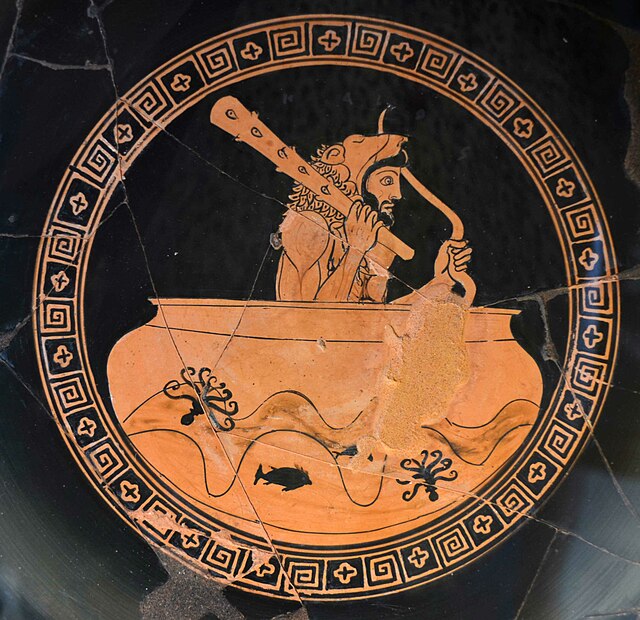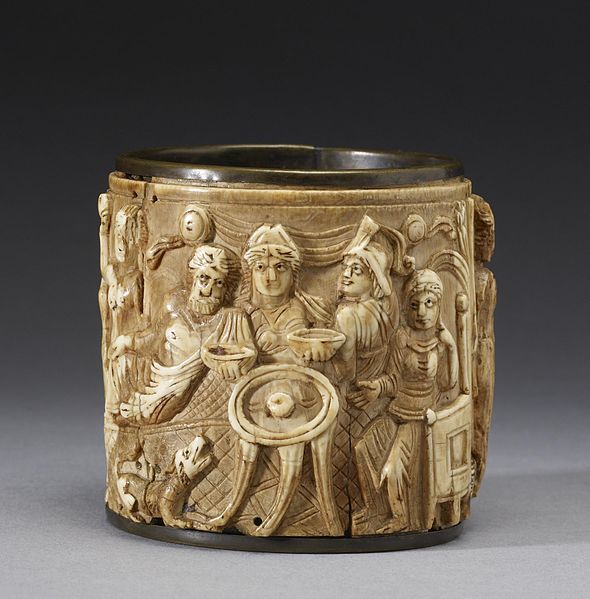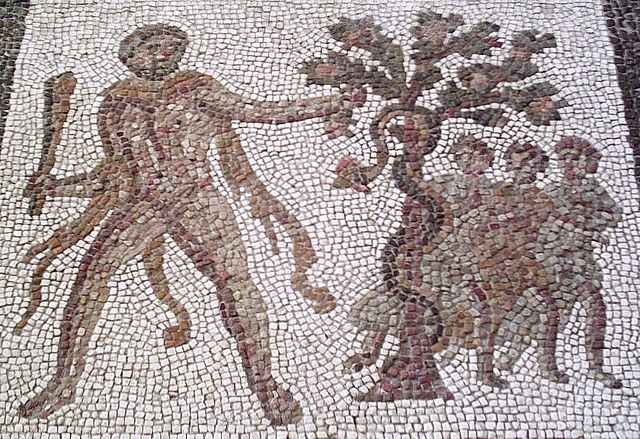In Greek mythology, Geryon, son of Chrysaor and Callirrhoe, the grandson of Medusa and the nephew of Pegasus, was a fearsome giant who dwelt on the island Erytheia of the mythic Hesperides in the far west of the Mediterranean. A more literal-minded later generation of Greeks associated the region with Tartessos in southern Iberia. Geryon was often described as a monster with either three bodies and three heads, or three heads and one body, or three bodies and one head. He is commonly accepted as being mostly humanoid, with some distinguishing features and in mythology, famed for his cattle.
A statuette of Geryon at the Museum of Fine Arts of Lyon
Heracles fighting Geryon, amphora by the E Group, ca. 540 BC, Louvre
Heracles on the sea in the bowl of Helios. Roma, Museo Gregoriano Etrusco, n. 205336.
Herakles fighting the three-bodied Geryon; the shepherd Eurytion and the dog Orthros are already dead. Kylix in the Staatliche Antikensammlungen, Munich
In Greek mythology, the Hesperides are the nymphs of evening and golden light of sunsets, who were the "Daughters of the Evening" or "Nymphs of the West". They were also called the Atlantides from their reputed father, Atlas.
Garden Hesperides by Edward Burne-Jones
The Garden of the Hesperides by Frederick, Lord Leighton, 1892.
This circular Pyxis or box depicts two scenes. The one shown presents the Olympian gods feasting around a tripod table holding the golden Apple of the Hesperides. The Walters Art Museum.
Detail of a third century AD Roman mosaic of the Labours of Hercules from Llíria, Spain showing Heracles stealing the golden apples from the Garden of the Hesperides








